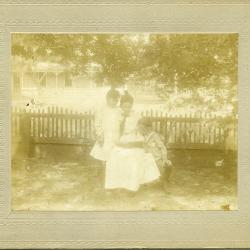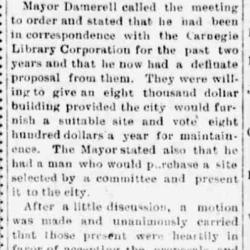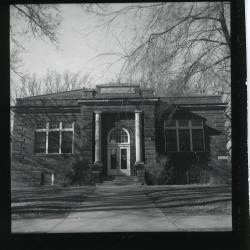Annotations from the Archives: The Library
Creating a culture of reading on the frontier wasn't easy! With days-long travel between towns, getting supplies of any kind—food, lumber, clothing, medicine—could be difficult and costly; it only stands to reason that reading materials like books and magazines might be considered a luxury.
Red Cloud did not have a public library until 1917. Though literary clubs were popular in the area, most people relied on borrowing privileges from local organizations or simply had to purchase their own small selection of reading materials. In 1913, the new Red Cloud YMCA created a library in one of its rooms, with material donated by the P.E.O. club, allowing its members borrowing rights.
The Red Cloud Chief, painstakingly documenting the arrival of Carnegie Libraries throughout Nebraska, published interviews with Andrew Carnegie and promoted the idea of Red Cloud attracting a library of its own. "At this day and age a public ligrary [sic] is no longer considered a luxury, but a necessity . . . . Now is the opportune time to take the matter up and decide what is to be done" (Red Cloud Chief, 23 November 1916).
With the local newspaper and many others supporting the initiative, in August 1916, Mayor Damerell asked the city to appraise the school lots adjacent to Grace Episcopal Church, so that those might be purchased by the city (at half price) for the purpose of constructing a Carnegie library. That motion was approved and in December of the same year, the mayor reported that he had submitted plans to the Carnegie Corporation for the Red Cloud Library. Public input overwhelmingly urged city officials to accept the Carnegie offer.
However, in January 1917, just two weeks later, William T. Auld, an area banker, gave $20,000 for the construction of the Auld Library and the purchase of books. Charles Cather was elected the first president of the library board. It's unclear what became of the Carnegie application.
The photo of Willa Cather reading to her younger siblings is significant; our collections contain a number of photos of her reading to children, and of other family members reading. It is clear from these photos, from the family's involvement with the Auld Library, and from Willa's own writing, just how much the Cather family valued literature and story. Willa Cather talked often about the influences of the things she read, and she remained a supporter of the Red Cloud library her whole life. The National Willa Cather Center owns a number of books and magazines that came from the Cather home library, many of which date from those pre-library times, in our Cather Family Library collection.



